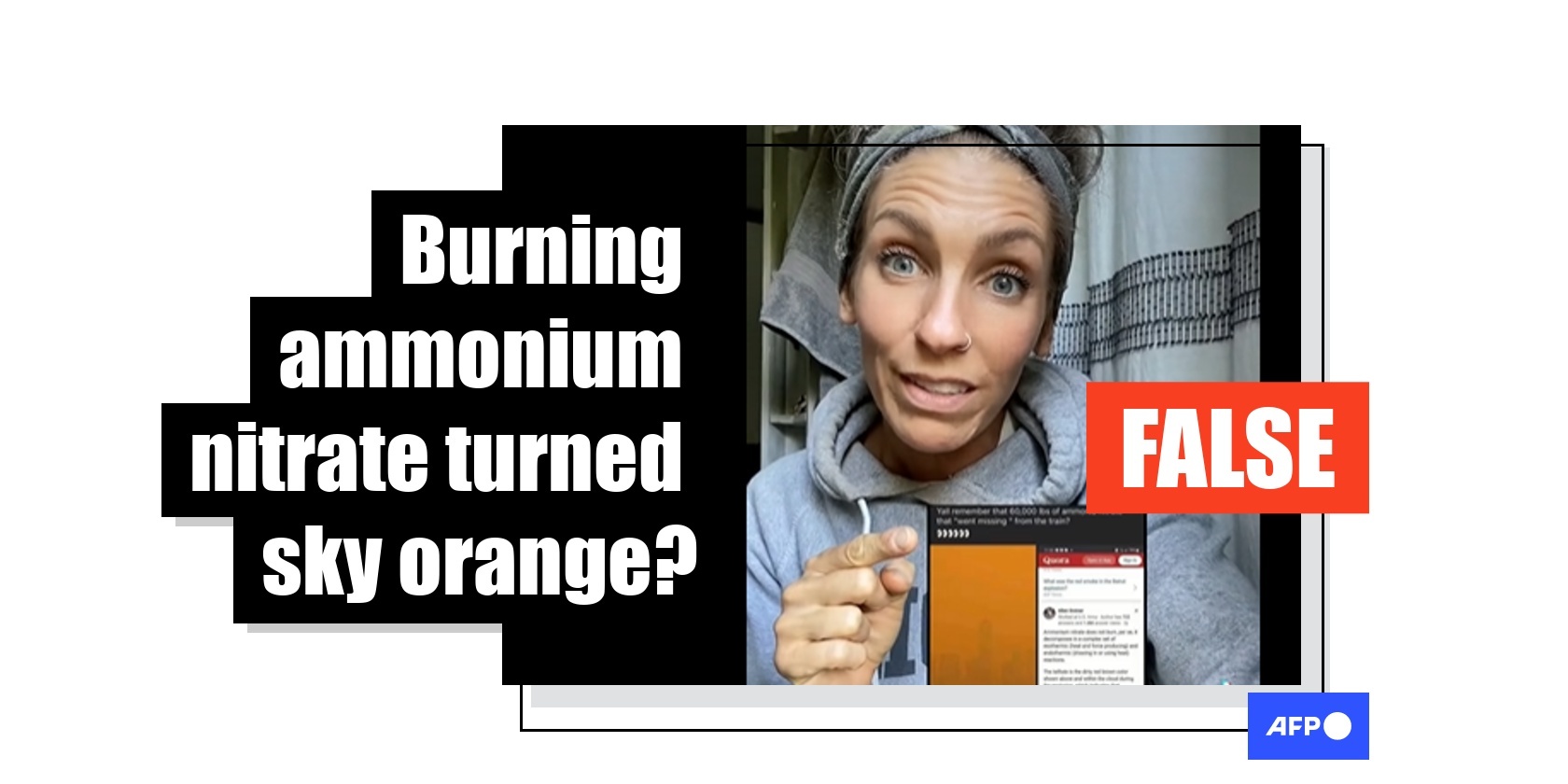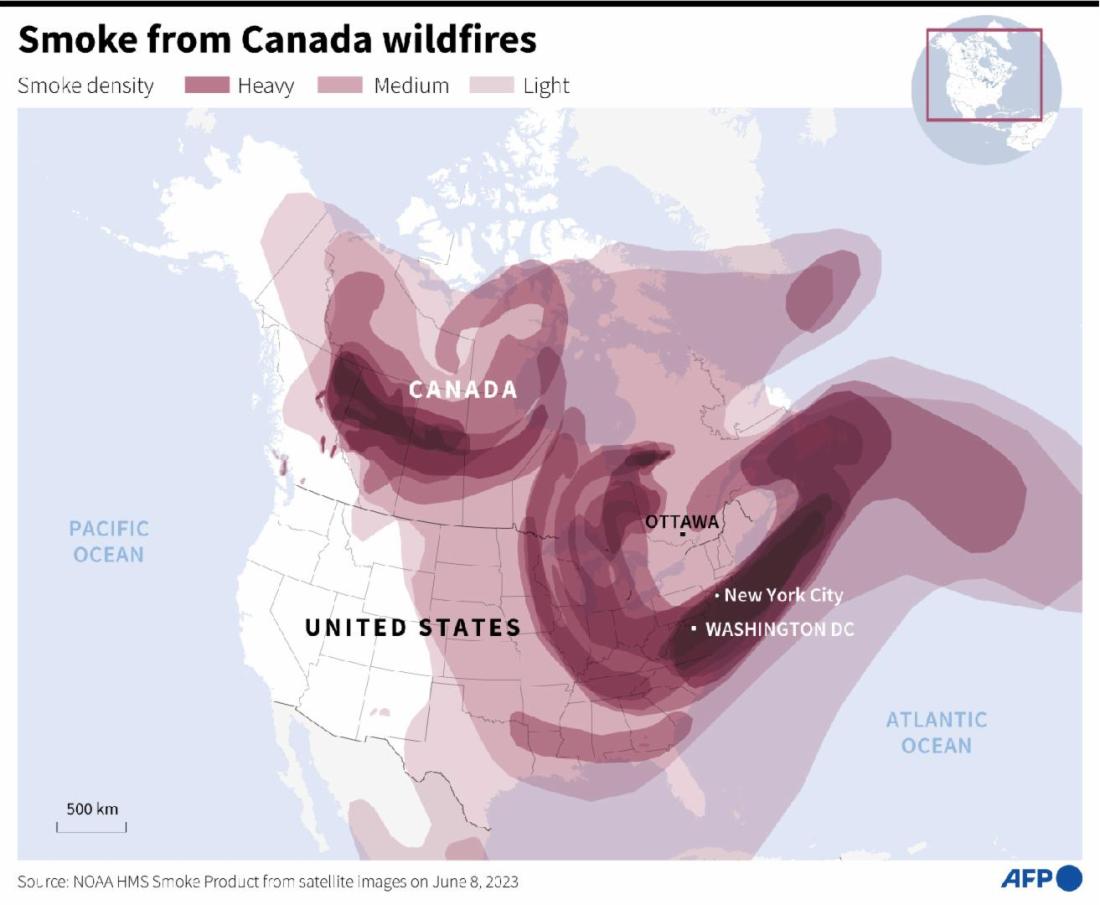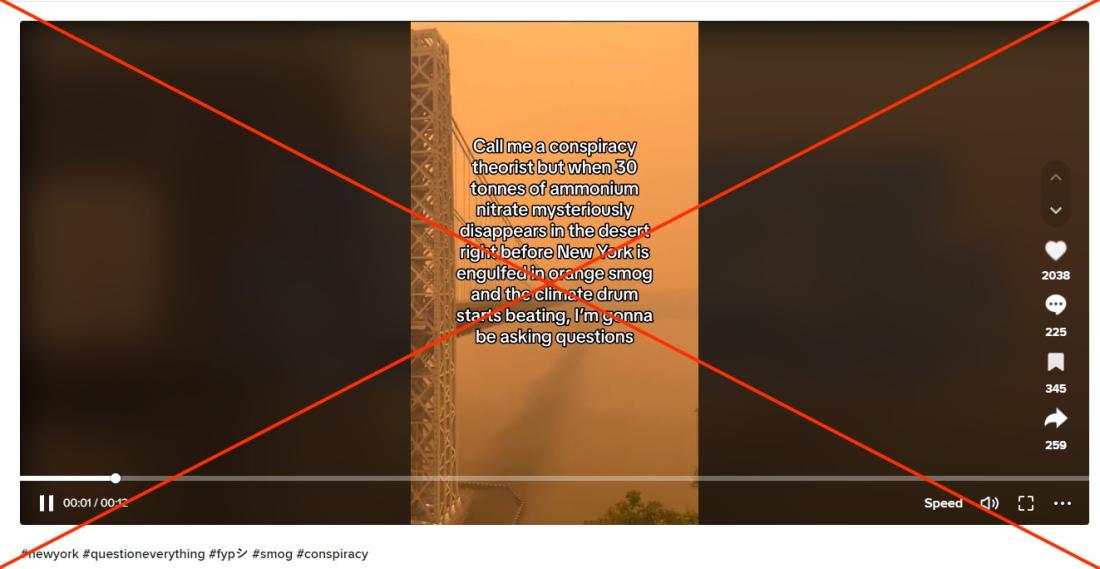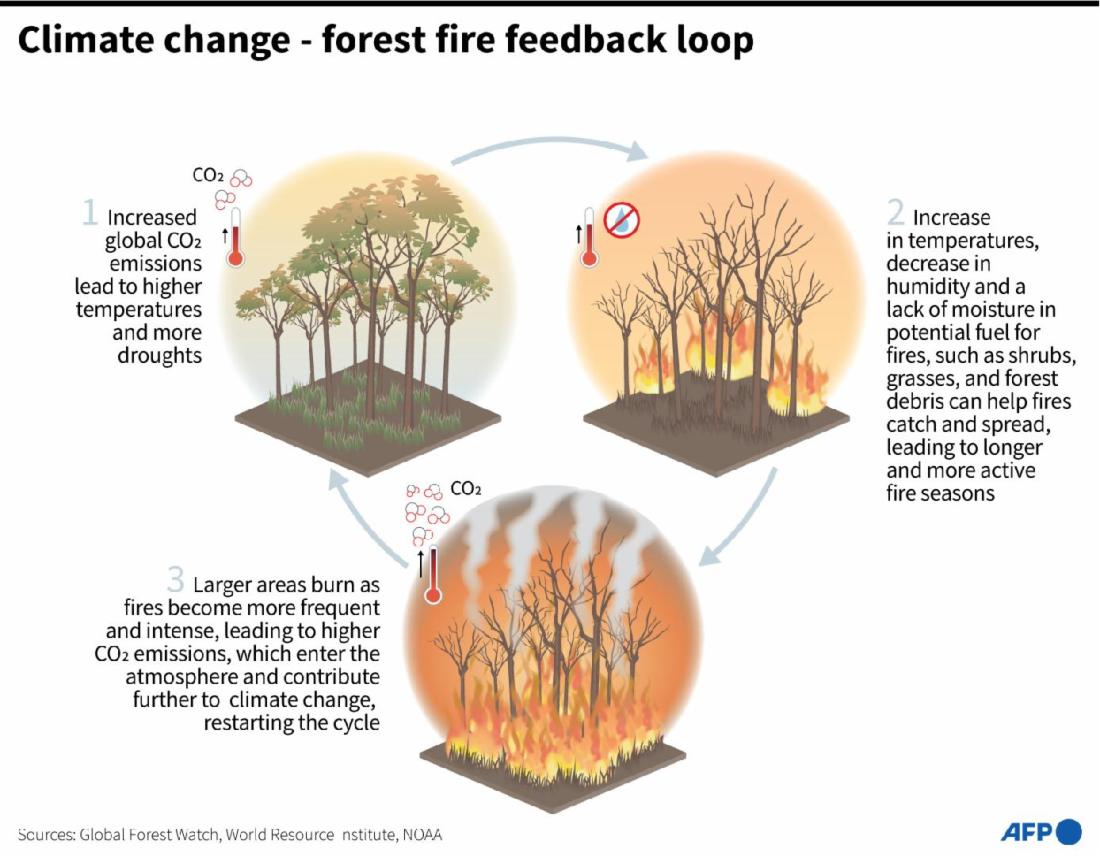
Canadian wildfire smoke changed sky's color, not chemical release
- This article is more than two years old.
- Published on June 22, 2023 at 21:15
- 4 min read
- By Gwen Roley, AFP Canada
"That yellow cloud of smog never passed over my house, and it would have had to to get to New York City," said a woman in a June 9, 2023 TikTok video, which received more than 1.3 million views before being deleted.
"I also want to ask you this question: What color does ammonium nitrate burn? Just saying."
The same clip later jumped to Facebook, where it received more than 50,000 views. Another version appeared on Twitter.

The posts imply smoke from Canada could not have reached New York City and that something else caused the record-breaking smog over the eastern United States. Some point to a missing shipment of ammonium nitrate in the state of California, claiming there could have been some sort of intentional chemical release.
However, mapped meteorological data from the National Oceanic and Atmospheric Administration (NOAA) and Colorado State University (archived here) does show Canadian wildfire smoke drifting east to New York City and other parts of the United States.
Jennifer Murphy, a professor of atmospheric chemistry at the University of Toronto, said an unusual air stream pushed the smoke west toward the province of Ontario before moving southeast.
Nicole Allen, a spokeswoman for Environment and Climate Change Canada (ECCC), told AFP in an email that clear air usually contains small particles that scatter blue light, making the sky appear blue. Larger particles in wildfire smoke scatter red light, which can present as red, yellow or orange smog.
"The major thing that people are noticing is the scattering from the particles," Murphy said. "That's light bouncing off of particles and making things look sort of darker and our visibility really decreases."
Murphy said wildfire smoke can sometimes appear dark because some particles, such as brown and black carbon, can absorb light in addition to refracting it.
The ECCC smoke forecast page FireWork says that since smoke can travel thousands of kilometers downwind from a fire, distant locations can be affected almost as much as those close by.

"Smoke from wildfires has affected millions of people in the US and Canada," Allen said. "Large-scale weather patterns and the resultant winds can cause smoke to travel vast distances."
Ammonium nitrate
Ammonium nitrate is a chemical compound that is often used in fertilizer and explosives.
In early May 2023, a shipment of ammonium nitrate from American chemical manufacturer Dyno Nobel went missing. The incident later prompted conspiracy theories about the true origins of the haze over New York City.

Dyno Nobel did not respond to AFP's requests for comment, but the company has said in previous statements that the ammonium nitrate was packaged in a non-combustible pellet form that does not pose a danger to the public.
When ammonium nitrate combines with oxygen and fuel, it creates a powerful explosive that produces nitrogen oxide when detonated, according to Scientific American. For example, the 2020 explosion of improperly stored ammonium nitrate in Beirut, Lebanon created a reddish plume in the sky due to the presence of nitrogen oxide.
Murphy of the University of Toronto said it is possible there are trace levels of ammonium nitrate in wildfire smoke since such blazes can produce ammonia and nitrogen oxide. But the color of the sky alone "was not evidence that there's ammonium nitrate," she said.
One place where scientists have confirmed high levels of the compound in the air is Salt Lake City, Utah. Nitrogen oxide from cars and other industrial equipment combined with ammonia from farming operations produces a colorless smog containing ammonium nitrate.
"There are instances where there's a very high level of ammonium nitrate particles and the air is not yellow," Murphy said.
No evidence of wildfire conspiracy
Since the start of Canada's historically intense wildfire season, AFP has debunked myriad claims of coordinated arson.
Some insist activists with political motivations are starting the blazes, despite Canadian authorities pointing to lightning and other causes. Other posts share conspiracy theories rooted in climate change denial.
Natural Resources Canada (NRC) said in a June 5 press release (archived here) that global warming is, in fact, making wildfire season worse in Canada. This year is particularly destructive due to hot, dry and windy conditions.

Chemistry researchers at the University of British Columbia (UBC) said in a November 2022 article that the wildfire particles that change the color of the sky also contribute to accelerated global warming.
"Some aerosol particles ... are colored, which means they are absorbing some light," the article says. "Any light from the sun that is absorbed instead of getting reflected back into space is converted into heat and warms the planet."
More of AFP's reporting on misinformation in Canada is available here.
Copyright © AFP 2017-2025. Any commercial use of this content requires a subscription. Click here to find out more.
Is there content that you would like AFP to fact-check? Get in touch.
Contact us
